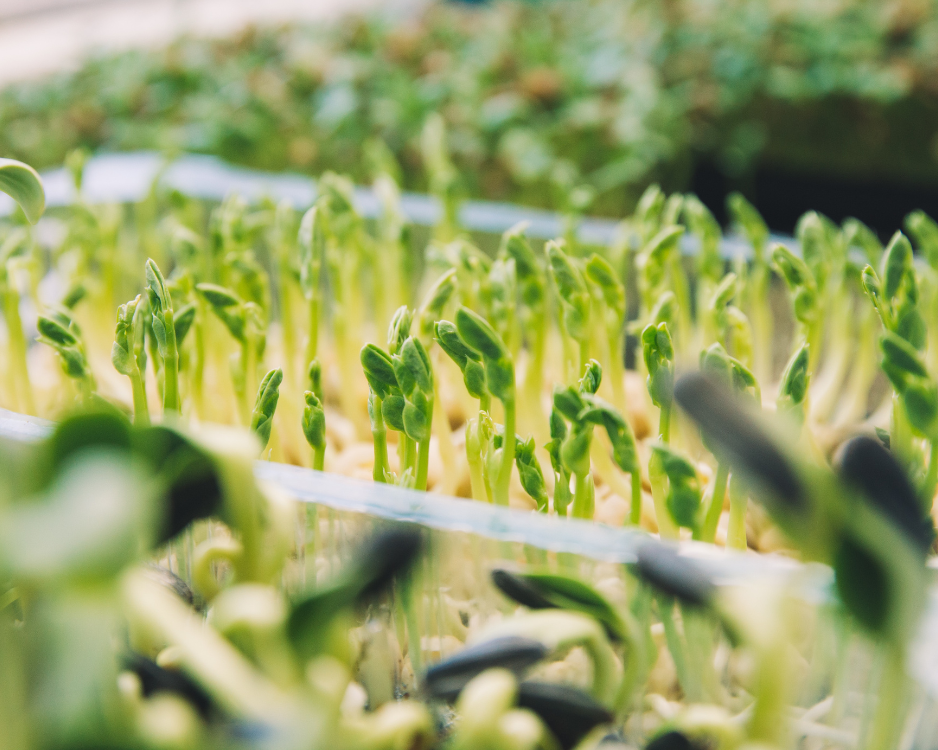
Microgreens: The Nutritional Powerhouses for Indoor Farming Enthusiasts
A fascinating world of nutrition-rich miniature greens are known as microgreens. These tiny but mighty plants are rapidly gaining popularity among indoor farming enthusiasts, and for all the right reasons. Not only do microgreens add a burst of flavor and color to your dishes, but they also pack a nutritional punch that belies their small size.
What are Microgreens?
Microgreens are young edible plants, harvested at an early stage of growth, typically within 7-21 days after germination. They are much smaller than baby greens but more mature than sprouts. Common microgreens include broccoli, kale, radish, arugula, sunflower, and many more. These delicate greens boast an array of vibrant colors and intense flavors, making them an exciting addition to salads, sandwiches, smoothies, and various other culinary delights.
Nutritional Powerhouses:
Depite their diminutive size, microgreens are nutritional powerhouses, packed with a concentrated dose of vitamins, minerals, and antioxidants. Studies have shown that they can contain up to 40 times more nutrients than their mature counterparts, making them an excellent choice for health-conscious individuals:
Vitamins: Microgreens are rich in vitamins A, C, E, and K, which are essential for supporting immune function, skin health, vision, and blood clotting.
Minerals: They are abundant in essential minerals like iron, magnesium, potassium, and zinc, vital for maintaining healthy bones, nerve function, and overall well-being.
Antioxidants: Microgreens are a potent source of antioxidants that help combat oxidative stress and inflammation, reducing the risk of chronic diseases.
Phytochemicals: These young greens are also rich in phytochemicals, such as sulforaphane, which have been linked to anti-cancer properties and other health benefits.
Benefits of Indoor Microgreen Farming:
Growing microgreens indoors is an excellent option for anyone seeking a fresh and convenient supply of these nutritional gems -
Space-Efficient: Microgreens can be grown in small containers, making them perfect for apartments, condos, or homes with limited outdoor space.
Year-Round Cultivation: Indoor farming allows you to grow microgreens all year long, ensuring a consistent supply of fresh greens regardless of the season.
Organic and Pesticide-Free: By growing your microgreens at home, you have full control over the growing process, ensuring they are organic and free from harmful chemicals.
Cost-Effective: Store-bought microgreens can be quite expensive, but growing them at home can save you money in the long run.
How to Grow Microgreens at Home:
Growing microgreens indoors is surprisingly simple and requires minimal equipment. Here's a step-by-step guide to get you started -
Choose your Seeds: Select high-quality microgreen seeds from a reputable supplier. Experiment with different varieties to enjoy a diverse range of flavors and nutrients.
Container and Soil: Use shallow containers or trays with drainage holes, and fill them with a well-draining soil mix.
Sow and Water: Scatter the seeds evenly over the soil surface and gently press them down. Mist the seeds with water and cover the container with a lid or plastic wrap until they germinate.
Provide Light: Microgreens need bright but indirect light. A sunny windowsill or using grow lights will work best.
Harvesting: Once the microgreens reach a height of 1-3 inches, typically within 1-3 weeks, they are ready to harvest. Use sharp scissors to cut them just above the soil line.
Microgreens are not only visually appealing and delicious; they are also packed with a treasure trove of nutrients. As an indoor farming enthusiast, you have the perfect opportunity to grow these nutritional powerhouses right in your own home. By incorporating microgreens into your diet, you'll not only elevate the taste of your dishes but also boost your health with a concentrated dose of vitamins, minerals, and antioxidants. So, why wait? Start your microgreen journey today and reap the benefits of these tiny yet mighty greens!





Leave a comment